
In the world of Augmentative and Alternative Communication (AAC) there are lots of myths about its limitations and barriers.
Here we’ll look at 7 of the most common misconceptions of AAC.
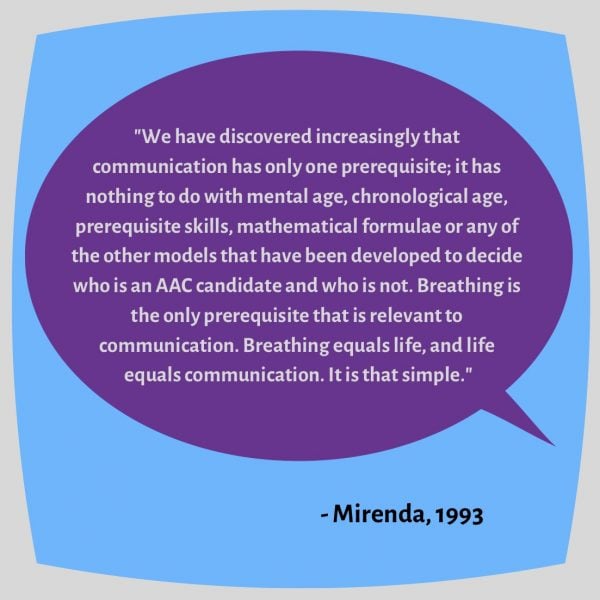
In years gone by, there was a general consensus that there were a certain set of skills a person would need before they could even try AAC. Current research indicates that there are no cognitive or prerequisite skills required to learn AAC.
Research has found that AAC is learned through modelling and teaching.
Often AAC is introduced late as it is initially seen as a ‘last resort’ after verbal language. Early use of AAC can promote language development and have a positive effect on speech, cognitive skills and social communication.
Learn more about prerequisite skills for AAC at PrAACtical AAC.
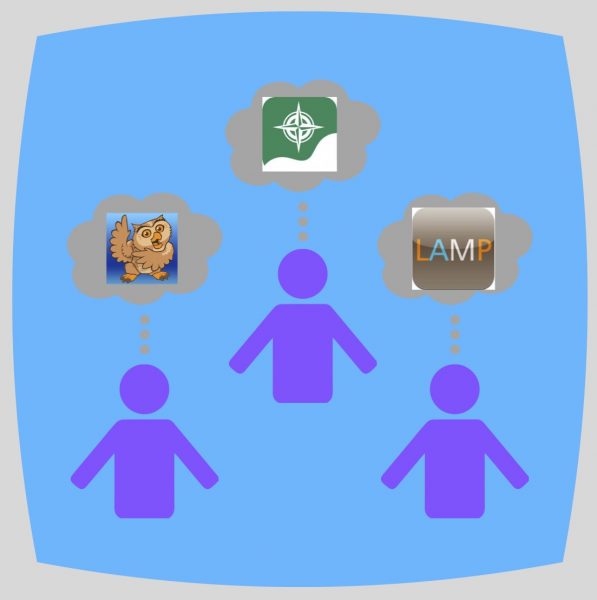
While we ourselves might have a preference for a certain style of AAC, it is not ethical to presume that all children will have the same preference. Individuals may not be able to fulfil their communicative abilities with the same device as other children. It is important to remember that we need to match the AAC system to the individual – one size does not fit all.
Some children may have physical difficulties which may impact on their ability to interact with an AAC device (e.g. iPad). Others, may just have a personal preference for one system over another. Children may also trial multiple AAC devices and systems before finding the one that suits their needs. We need to work with the children and their preferences when prescribing a system.
Choosing an AAC system should be a team effort which includes the AAC user, their family, school, Speech Pathologist and sometimes Occupational Therapist/Physiotherapist.
Learn more from Liberator and ASHA.
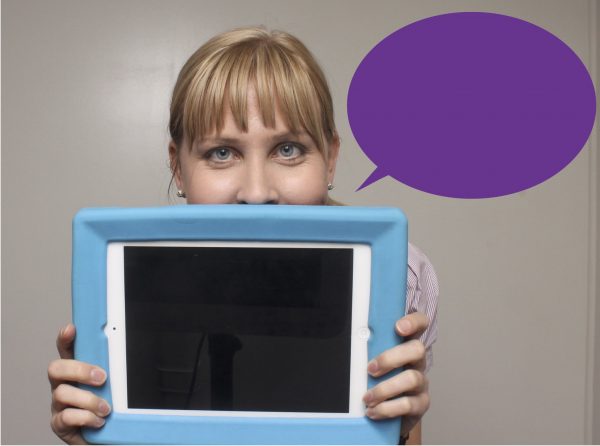
There has been a stigma attached to AAC for some time that using it will stop the development of verbal communication and children won’t ‘talk’. In fact, studies have shown the opposite to be true, with most studies showing an increase in speech production after using AAC.
Research shows that AAC has a positive effect on speech because:
Learn more about AAC and Speech Development at Tobii Dynavox,

Using only photos can make it difficult for a child to associate the image with more than one item. For example, using a photo of a Dalmatian and teaching it as ‘dog’. Learning this one photo does not mean that a person will generalise its meaning to a German Shepard and know that it is a dog. Symbols, however, allow the teaching of multiple items being represented by a single symbol and an associated meaning. Photos may also be distracting for children who have difficulty filtering out backgrounds or non-essential parts of the photo.
Research suggests using photos can lead to an overemphasis on nouns. Words such as verbs are difficult to represent without a person or animal completing the action. Difficulty in representing different word types can impact on the ability to form phrases and use grammar. The use of photos can also restrict communication growth as using only nouns can lead to only choice-making communication
Core vocabulary such as ‘more’, ‘help’, ‘go’ are difficult to represent in photos but are often acquired earlier than nouns. Research suggests that individuals of all ages and stages of development can learn symbols through adequate modelling in meaningful situations.
For more information read this short paper from Porter and Burkhart.
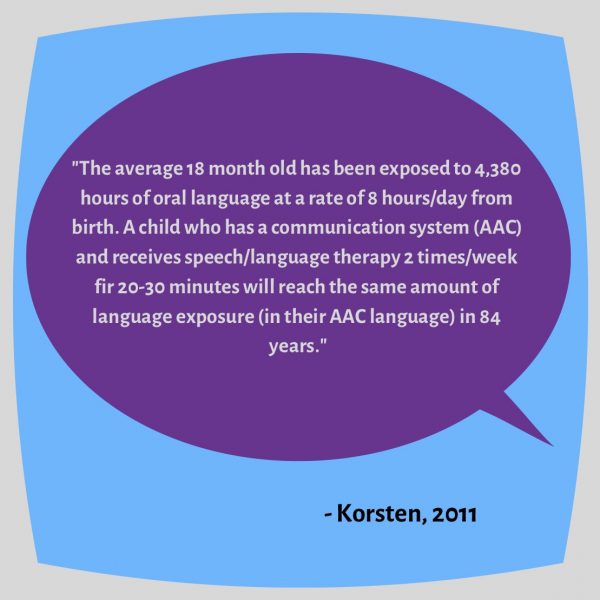
AAC is a complex language system which requires teaching. Research suggests a typical AAC user will receive models of about 1,600 to 24,000 words per week as opposed to 125,000 words per week for speaking children. AAC users require modelling and teaching of AAC across environments, situations and people to help them learn how to effectively communicate with others and to generalise their skills across settings.
The teaching of AAC requires consistent modelling from a variety communication partners across a range of environments and settings, just like verbal language.
For more information about teaching AAC see PrAACtical AAC and AssistiveWare.
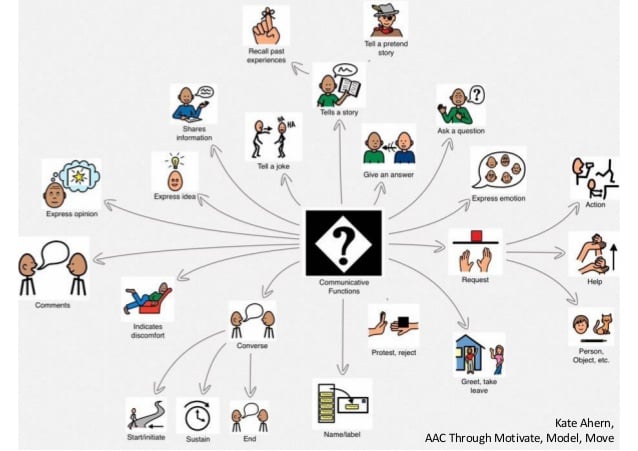
While requesting is one function of communication, individuals need to be able to, or at least be provided with opportunities to do much more than just request. The graphic above by Kate Ahern, shows the range of communicative functions that any language set should have. It is important for our AAC users to be able to do all of these things to ensure that their needs are being fully met. A robust communication system will also provide them with every opportunity to build relationships outside of the classroom and in to the future.
For more information about moving beyond requesting see AssistiveWare, Spectronics and Discover AAC
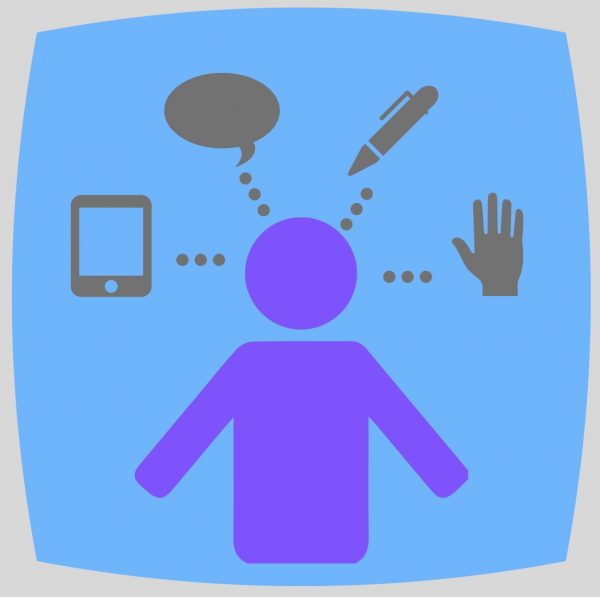
When we communicate (as verbal communicators) we use a range of methods to get our message across including; speech, gesture, body language, facial expression, symbols and written language. We must also expect that out AAC users will use multiple methods of communication.
Multimodal communication is the use of multiple modes of communication (i.e speech, sign language, symbols, devices). Research suggests that we should respect each of these modes and they should carry equal communication weight. For example, If a child responds ‘yes’ with a head nod or sign, they do not need to then use their AAC device to say ‘yes’. The device could be used to provide a model and expansion to ’yes’ e.g. ‘yes please’ or ‘yes I would’, but should not be used as a replacement for the other mode of communication used.
To learn more about multimodal communication see AssistiveWare and PrAACtical AAC.
Check out our blogs for more information about:
Try these links for more research and information in to AAC myths:
Common Questions about AAC services in Early Intervention
American Speech-Language-Hearing Association (ASHA)
Would you like an individualised assessment to see how your child could benefit from AAC? Contact us today!